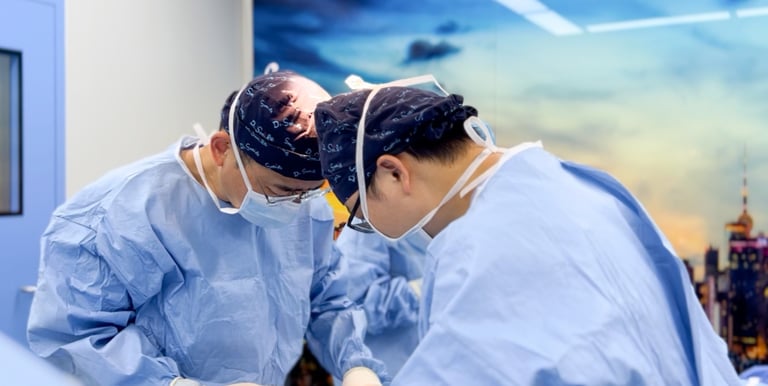CHIVA Technique for Varicose Veins: Theory, Practice, and Prospects
Varicose veins are a common condition that affects the quality of life for many individuals. However, a novel treatment method called the CHIVA technique is changing the landscape. Originating from Europe, this minimally invasive treatment concept and technique aim to improve or eliminate varicose veins by restoring normal blood flow within the venous system. This article delves into the principles, efficacy, advantages, limitations, patient experience, and future prospects of the CHIVA technique.
The fundamental principle of the CHIVA technique is to improve varicose veins by restoring normal blood flow instead of simply removing the affected veins. This approach not only resolves the issue but also preserves the veins. The specific steps of the CHIVA technique involve using ultrasound hemodynamic methods to locate the escape point (EP) and then performing minimally invasive surgery under local anesthesia to restore normal drainage.
Past research and clinical practice have demonstrated the effectiveness of the CHIVA technique. In fact, the outcomes and effects of the CHIVA technique in varicose vein treatment are highly significant. Approximately 95% of patients experience noticeable symptom improvement after surgery, and postoperative venous system blood flow function is significantly enhanced. Furthermore, the CHIVA technique can significantly reduce the recurrence rate of varicose veins and the occurrence of surgical complications.
Compared to traditional treatment methods, the CHIVA technique offers advantages such as being minimally invasive, having a shorter recovery period, and providing rapid symptom relief. However, the CHIVA technique also has its limitations. For example, it may not be suitable for all types of varicose veins, requires specialized technical skills and experience, and treatment outcomes can be influenced by individual patient differences.
Clinical cases have shown that the CHIVA technique plays a positive role in improving patients’ quality of life. Most patients provide positive feedback about the CHIVA technique, stating that the recovery period after surgery is short, and their quality of life significantly improves. According to statistics from Dr. Smile Medical Group, they have provided minimally invasive treatment services to over 20,000 patients with lower limb varicose veins. Encouragingly, the patient satisfaction rate exceeded 98.2% in 2021.
Currently, research on the CHIVA technique primarily focuses on further improving its efficacy, reducing recurrence rates, and expanding its indications. With technological advancements and in-depth research, the CHIVA technique has tremendous development potential and may become a mainstream approach for varicose vein treatment.
In conclusion, the CHIVA technique is an effective treatment method for varicose veins that significantly improves symptoms, reduces recurrence rates, and has a shorter recovery period. As research and application of the CHIVA technique continue to progress, its importance in varicose vein treatment grows, and it holds promising prospects. Further research and exploration are warranted to fully understand its potential.
Varicose veins are a common condition that affects the quality of life for many individuals. However, a novel treatment method called the CHIVA technique is changing the landscape. Originating from Europe, this minimally invasive treatment concept and technique aim to improve or eliminate varicose veins by restoring normal blood flow within the venous system. This article delves into the principles, efficacy, advantages, limitations, patient experience, and future prospects of the CHIVA technique.
The fundamental principle of the CHIVA technique is to improve varicose veins by restoring normal blood flow instead of simply removing the affected veins. This approach not only resolves the issue but also preserves the veins. The specific steps of the CHIVA technique involve using ultrasound hemodynamic methods to locate the escape point (EP) and then performing minimally invasive surgery under local anesthesia to restore normal drainage.
Past research and clinical practice have demonstrated the effectiveness of the CHIVA technique. In fact, the outcomes and effects of the CHIVA technique in varicose vein treatment are highly significant. Approximately 95% of patients experience noticeable symptom improvement after surgery, and postoperative venous system blood flow function is significantly enhanced. Furthermore, the CHIVA technique can significantly reduce the recurrence rate of varicose veins and the occurrence of surgical complications.
Compared to traditional treatment methods, the CHIVA technique offers advantages such as being minimally invasive, having a shorter recovery period, and providing rapid symptom relief. However, the CHIVA technique also has its limitations. For example, it may not be suitable for all types of varicose veins, requires specialized technical skills and experience, and treatment outcomes can be influenced by individual patient differences.
Clinical cases have shown that the CHIVA technique plays a positive role in improving patients’ quality of life. Most patients provide positive feedback about the CHIVA technique, stating that the recovery period after surgery is short, and their quality of life significantly improves. According to statistics from Dr. Smile Medical Group, they have provided minimally invasive treatment services to over 20,000 patients with lower limb varicose veins. Encouragingly, the patient satisfaction rate exceeded 98.2% in 2021.
Currently, research on the CHIVA technique primarily focuses on further improving its efficacy, reducing recurrence rates, and expanding its indications. With technological advancements and in-depth research, the CHIVA technique has tremendous development potential and may become a mainstream approach for varicose vein treatment.
In conclusion, the CHIVA technique is an effective treatment method for varicose veins that significantly improves symptoms, reduces recurrence rates, and has a shorter recovery period. As research and application of the CHIVA technique continue to progress, its importance in varicose vein treatment grows, and it holds promising prospects. Further research and exploration are warranted to fully understand its potential.


